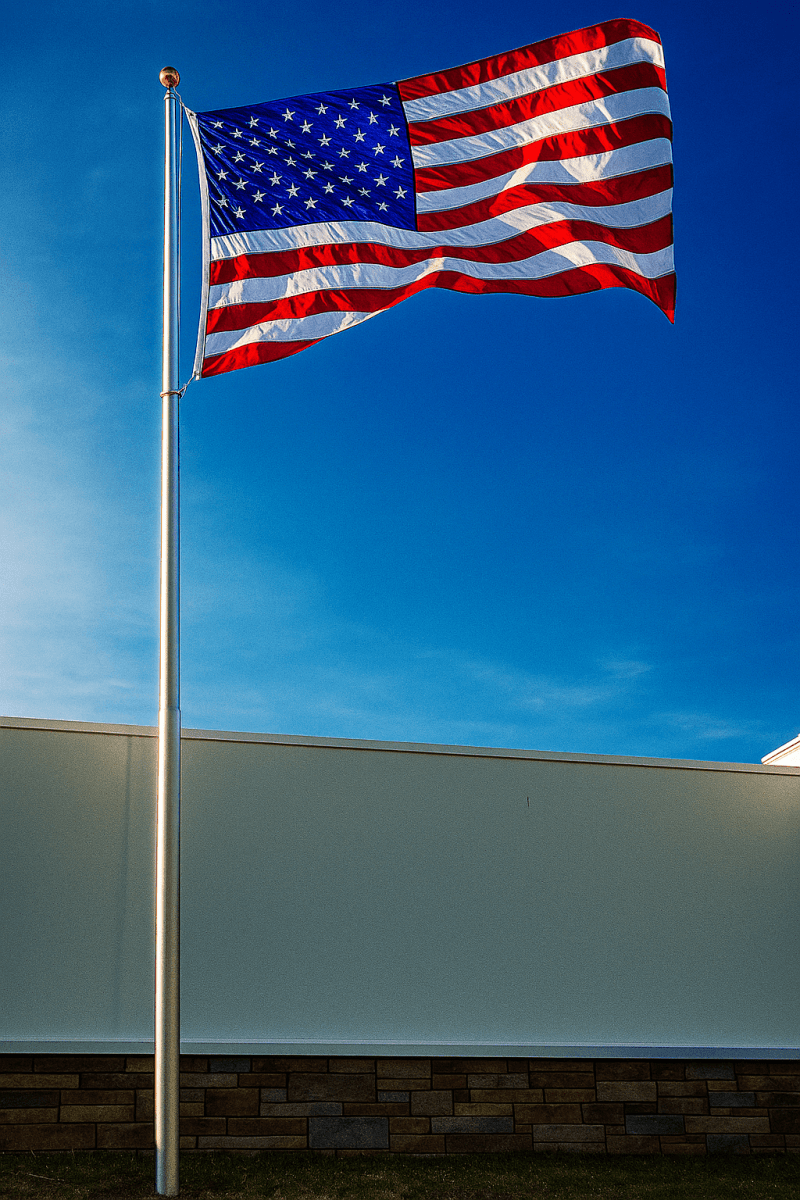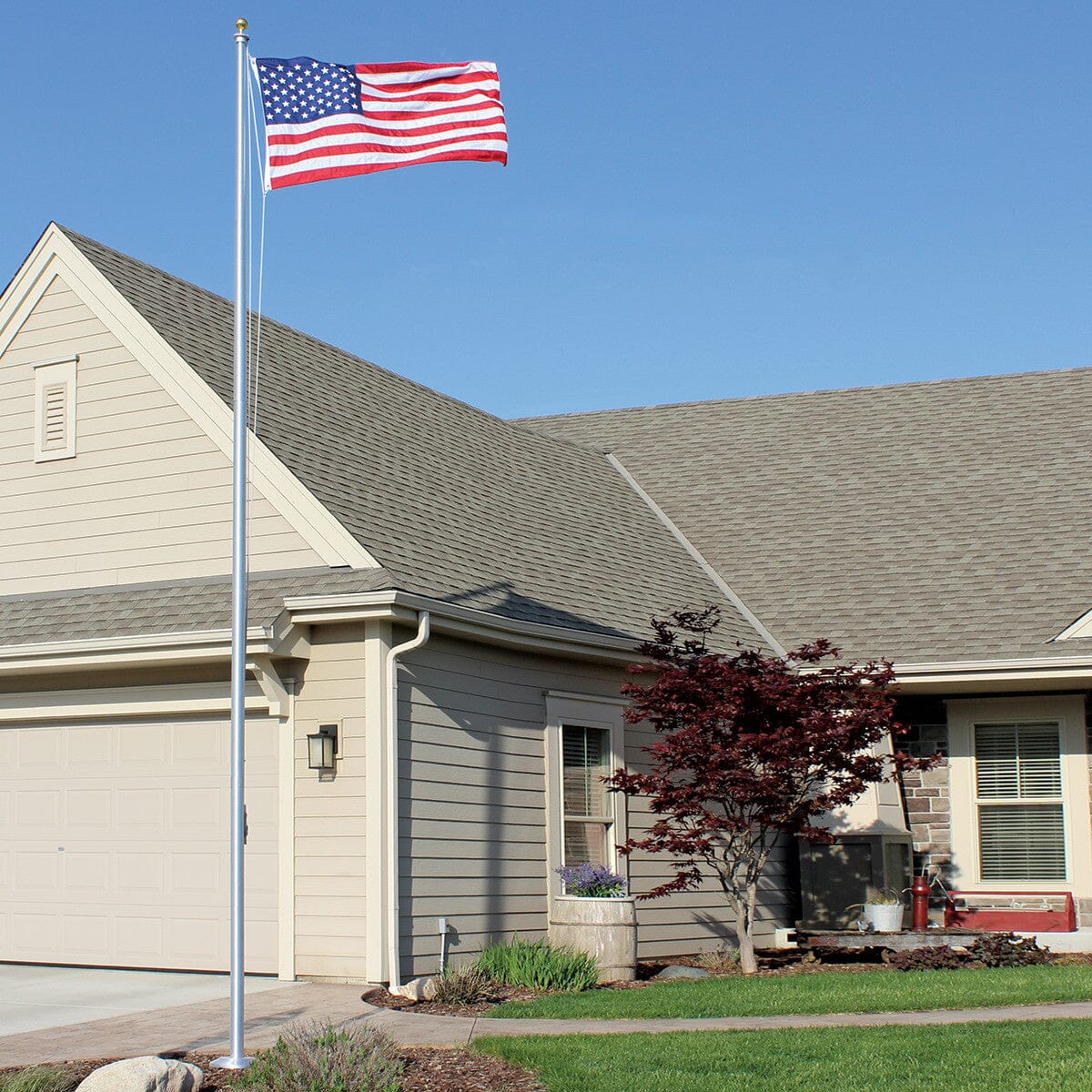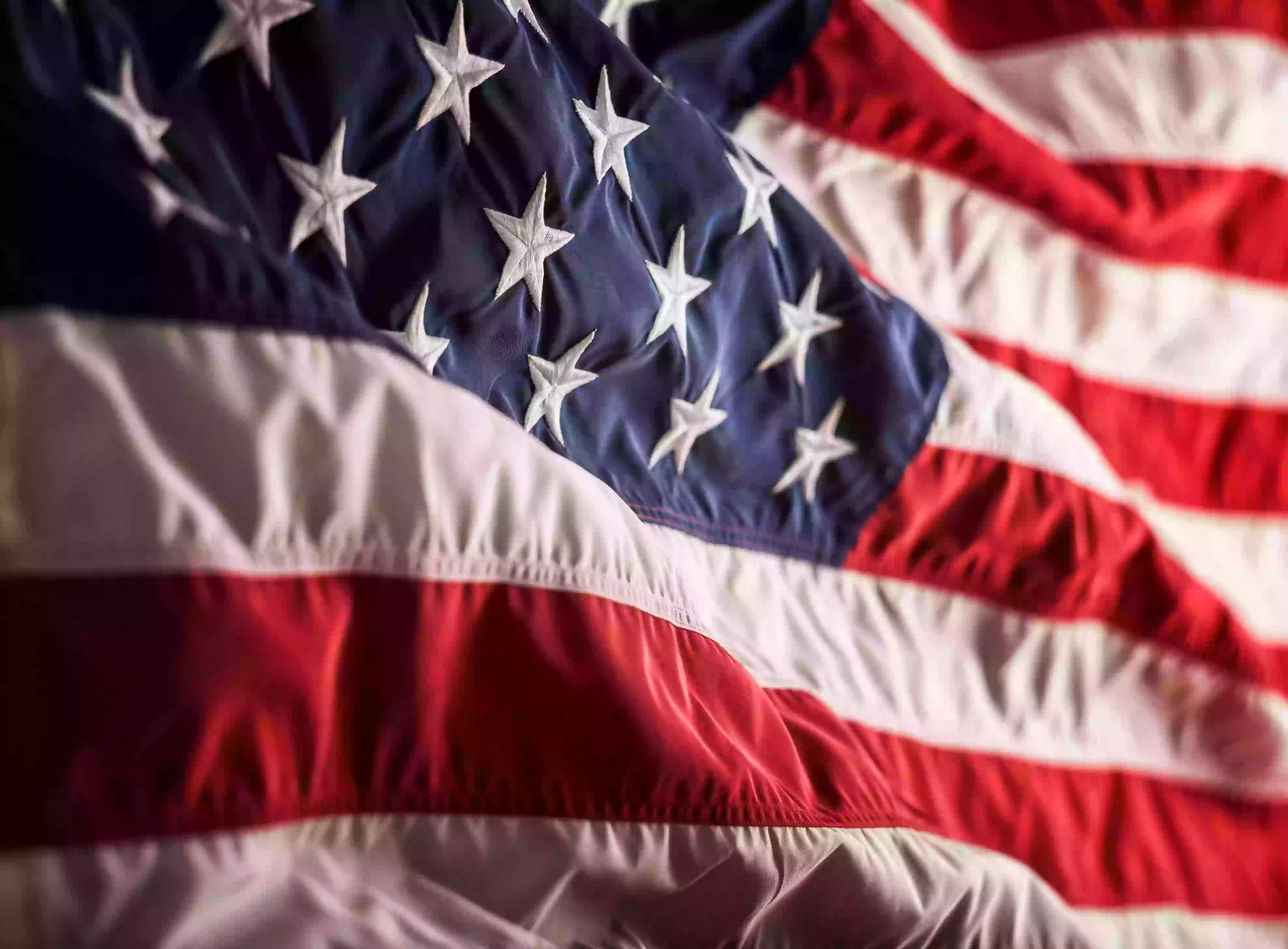The American flag waves proudly from countless public spaces across the nation, serving as more than just a colorful piece of fabric. From bustling city halls to quiet neighborhood parks, these displays create powerful connections between citizens and their shared heritage. The role of American flags in public spaces extends far beyond simple decoration—they foster unity, honor service, and remind us of the democratic values that bind our diverse communities together.
Public displays of the flag matter more today than ever before. As our nation navigates complex challenges, these visible symbols provide common ground where Americans of all backgrounds can find shared purpose. Whether mounted on towering poles at government buildings or displayed respectfully in residential areas, each flag tells the same story of resilience, freedom, and hope.
The presence of American flags in public spaces serves multiple vital functions that strengthen our civic fabric and reinforce our national identity.
A Symbol of Unity and National Identity
Whether flying over a courthouse or lining a residential street, the American flag’s presence reinforces unity and pride.
The Historical Power of the American Flag
Throughout American history, the flag has rallied citizens during our most defining moments. Revolutionary War soldiers carried early versions into battle against British forces. Civil War regiments fought beneath its stars and stripes to preserve the Union. Following the September 11 attacks, flags appeared spontaneously across the country, transforming grief into collective determination.
These historical precedents demonstrate how flags transcend political divisions and regional differences. Public displays remind passersby that they belong to something larger than their individual lives—a nation built on shared struggles and common triumphs.
Representing Shared Values in Public Life
The flag embodies fundamental American principles: liberty, justice, democracy, and service to others. When displayed prominently in public spaces, it reinforces these values in the daily lives of citizens. Children walking to school pass flag displays that silently teach civic responsibility. Adults conducting business near flag installations receive subtle reminders of their duties as citizens.
Public flag displays maintain civic pride across generations. They connect modern Americans to the sacrifices and achievements of those who came before while inspiring continued commitment to democratic ideals.
The Flag in Government and Civic Spaces
Courthouses, state capitols, and city halls prominently feature American flags as markers of legitimate governance. These displays signal that the institutions within operate under constitutional authority and serve the people’s interests. The flag’s presence transforms ordinary buildings into symbols of democratic participation and the rule of law.
Most municipalities follow specific guidelines for government flag displays, ensuring proper height, adequate illumination, and regular maintenance. These standards reflect the serious responsibility government institutions bear as stewards of national symbols.
Educational institutions use flag displays to promote civic understanding among students. The daily Pledge of Allegiance ceremony, conducted beneath the flag, introduces young Americans to concepts of loyalty, unity, and shared responsibility. These early experiences shape lifelong attitudes toward citizenship and community participation.
Schools demonstrate responsible flag stewardship by teaching proper display protocols and respectful handling procedures. Students learn that flag care requires attention, dedication, and reverence—qualities that extend naturally to civic engagement.

Honoring Service and Sacrifice
Across the nation, flags serve as powerful tributes to those who dedicate their lives to protecting others. In both military and civilian service settings, the American flag stands as a visible expression of honor, sacrifice, and duty.
Military Bases and Memorials
Military installations feature elaborate flag ceremonies that honor those who serve our nation in uniform. These displays remind service members and civilians alike of the values worth defending. National cemeteries use flags as silent tributes to fallen heroes, creating sacred spaces where gratitude and remembrance intersect.
Special installations like Avenue of Flags displays during Veterans Day create powerful visual reminders of military sacrifice. Rows of flags stretching across memorial grounds represent individual lives given in service, making abstract concepts of honor and duty tangible and immediate.
Fire Stations and Police Departments
First responders display flags daily to honor their role as community protectors. Police and fire departments maintain flags as symbols of their commitment to public safety and service. These displays connect emergency services to the broader American tradition of citizen-soldiers and volunteer service.
Proper flag maintenance at these facilities demonstrates the professionalism and respect these organizations bring to their duties. Well-maintained displays reflect institutional pride and community commitment.
Flags in Community and Commercial Spaces
Beyond government buildings and memorials, American flags play a vital role in everyday community life. From local parks to business storefronts, these displays foster unity, pride, and a shared sense of purpose.
Local Parks, Town Squares, and Events
Public parks and town squares use flag displays to create gathering places where community celebrations naturally occur. Fourth of July festivals, Memorial Day ceremonies, and other civic holidays rely on flag displays to establish appropriate atmospheres of patriotic celebration and solemn remembrance.
These installations transform ordinary public spaces into venues for shared civic experiences. Citizens who might otherwise have little interaction find common ground beneath flag displays during community events.
Businesses and Commercial Properties
Business owners display flags to demonstrate community connection and build customer trust. These displays signal alignment with American values and commitment to local communities. For veteran-owned businesses or companies emphasizing American manufacturing, flag displays reinforce marketing messages about patriotism and quality.
Professional flag installations require attention to proper display protocols, adequate lighting, and regular maintenance. Well-executed commercial displays enhance business reputations while contributing to community pride.
Residential Displays and Patriotism at Home
Homeowners who display flags participate directly in maintaining American traditions. These residential displays extend the role of American flags in public spaces into neighborhoods and communities, creating networks of patriotic expression that strengthen local bonds.
Home flag displays allow ordinary citizens to express civic pride while contributing to community character. Neighborhoods with multiple flag displays develop distinctive identities rooted in shared values and mutual respect.
Modern flagpole technology makes residential flag displays more accessible than ever before. Telescoping poles allow easy flag changes and maintenance, while wall-mounted options suit various architectural styles and space constraints. These innovations enable more Americans to participate in flag display traditions regardless of property size or physical limitations.
Today, homeowners can easily find quality flags and flagpoles for sale that suit both residential and commercial needs, making patriotic displays affordable and convenient for every budget and situation.
Proper Display and Respectful Practices
Effective flag displays follow established protocols for display times, lighting, and weather protection. Flags should fly from sunrise to sunset, or be properly illuminated at night. Damaged flags must be retired respectfully and replaced to preserve their dignity. These practices uphold the flag’s symbolic power and maintain public respect.
Local groups like Boy Scouts, civic clubs, and veteran organizations play key roles in flag education. They teach proper techniques, host retirement ceremonies, and pass on the meaning of the flag to younger generations.

Building Stronger Communities Through Flag Display
American flags in public spaces serve as powerful unifying forces that transcend political divisions and cultural differences. These displays remind us daily of shared values, common heritage, and mutual responsibilities as citizens of this great nation.
Whether you own a business, manage public property, or simply want to express patriotic pride at home, every flag display contributes to America’s civic strength. Consider how you might honor the flag through thoughtful display in your own community spaces, knowing that your participation helps weave the fabric that binds us together as Americans.







